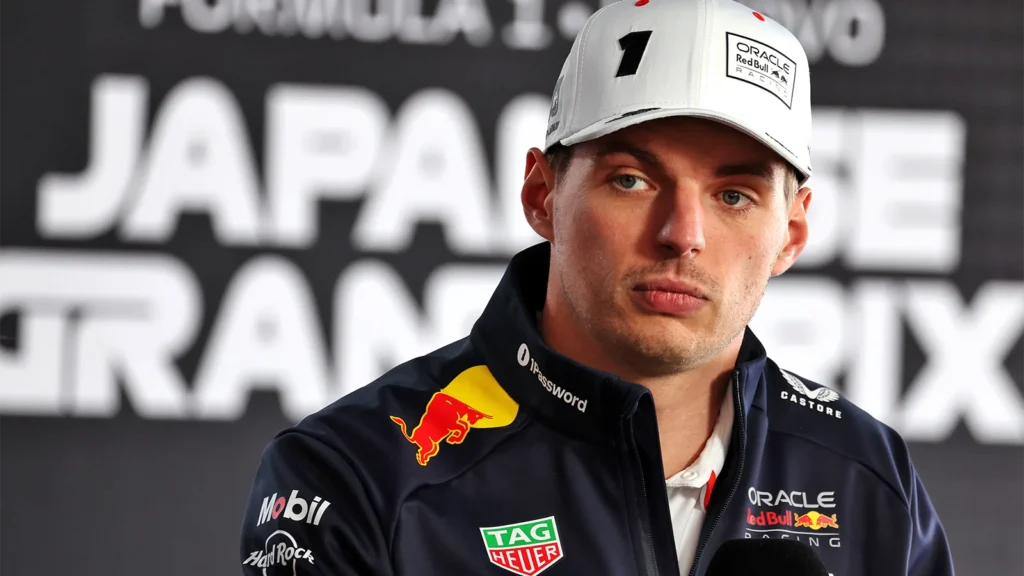
Max Verstappen provided crucial insights regarding a recurring issue at Red Bull.
Max Verstappen has been advised to overlook what is typically an essential tool in F1 and rely on his expertise instead. Red Bull advisor Helmut Marko has expressed his concerns regarding the ongoing issues Red Bull encounters with its simulator, instead encouraging four-time F1 champion Verstappen to disregard its data. A frequent characteristic of Red Bull in recent seasons has been its difficulty with pace and balance on Fridays in practice, yet Verstappen often rescues Red Bull with his qualifying efforts before achieving an impressive race outcome. Recently in Japan, Verstappen showcased this when the RB21 posed challenging during practice, but he ultimately produced an exceptional pole position lap, securing the first place on the grid, surpassing McLaren’s Lando Norris by just 0.012s. Verstappen then seamlessly transformed that into his initial victory of the season, even though he had a less competitive setup than Norris. Marko, however, is dissatisfied with the performance of the simulator numbers. “When the simulator guarantees us excellent lap times, we move in reverse on the track,” Marko informed Auto, Motor und Sport. “Two years ago in Monte Carlo, that was the situation, and it happened again [in Japan].” I advised Max to rely on his experience instead of the simulator’s recommendations. Red Bull team leader Christian Horner stated that, from his perspective, the “most effective sensor in the car is the driver, and we continue to ensure the car operates within the optimal range.”
The comments from Marko and Horner highlight a growing internal concern at Red Bull about the reliability of their technical preparation. While simulators are an integral part of car setup and development across the F1 paddock, Red Bull’s recent experiences suggest theirs may be giving misleading guidance—especially in relation to track-specific conditions.
This discrepancy between simulator predictions and actual on-track behavior has created significant challenges during practice sessions. In particular, the RB21 has often looked unstable or underperforming on Fridays, only for Verstappen to recalibrate based on instinct and experience, ultimately delivering when it matters most.
In Japan, the situation was a clear example. The team spent much of practice testing setup directions that were based on simulator feedback. These setups left the car unpredictable through corners and lacking in front-end grip. However, Verstappen quickly understood that the problem lay not in track conditions but in the simulator-derived data that had been used to plan the weekend.
By the time qualifying came around, the Dutchman had already pushed back on some of the simulator-informed setup calls, opting instead for configurations he felt more confident with—even if they contradicted the team’s initial plan. His resulting pole lap was one of the most impressive of his career, particularly considering the close margin to Lando Norris and the car’s earlier struggles.
Marko’s frustration is rooted in how such situations disrupt the team’s momentum and preparation. He believes Verstappen’s driving instincts are not only reliable but often more accurate than the simulator, especially on complex tracks like Monaco and Suzuka, where elevation changes, track surface conditions, and temperature variations can easily confuse software predictions.
“We have to improve this,” Marko added. “It’s not acceptable for a team like Red Bull to continue relying on faulty data. The simulator is supposed to help us get ahead, not hold us back.”
Christian Horner echoed similar concerns, though with a more optimistic outlook. He praised Verstappen’s adaptability and emphasized the value of driver feedback. “Max has an incredible feel for the car. Even when the numbers say one thing, he can sense what the car needs and make it work,” Horner said. “That kind of driver input is irreplaceable. It’s why we always keep communication open between the pit wall and the cockpit.”
Despite the simulator struggles, the strength of Verstappen’s feedback loop with his engineers has helped Red Bull stay competitive. Lead race engineer Gianpiero Lambiase has often been the bridge between Verstappen’s feedback and the technical team’s decisions, helping translate instinct into actionable setup changes.
Still, questions remain about the simulator’s reliability heading into future races. The upcoming rounds feature a mix of high-speed and street circuits, including Miami and Imola—both of which have proven tricky in past seasons for Red Bull in terms of initial setup.
Verstappen, for his part, appears unbothered. In his post-race comments after the Japanese Grand Prix, he acknowledged the simulator concerns but focused on execution. “It wasn’t ideal in practice, but we found our way,” he said. “Sometimes you just have to feel it out. Numbers help, but they don’t tell the whole story.”
As Red Bull continues to analyze the root of the problem, the team is expected to introduce updates to its simulator hardware and software later in the season. For now, though, Verstappen will continue doing what he does best—driving by instinct, trusting his understanding of the car, and pushing beyond the limitations of the tools at hand.
Whether the simulator issues are resolved quickly or not, one thing remains clear: Verstappen’s unique ability to adapt and deliver under pressure keeps Red Bull firmly in the title fight.